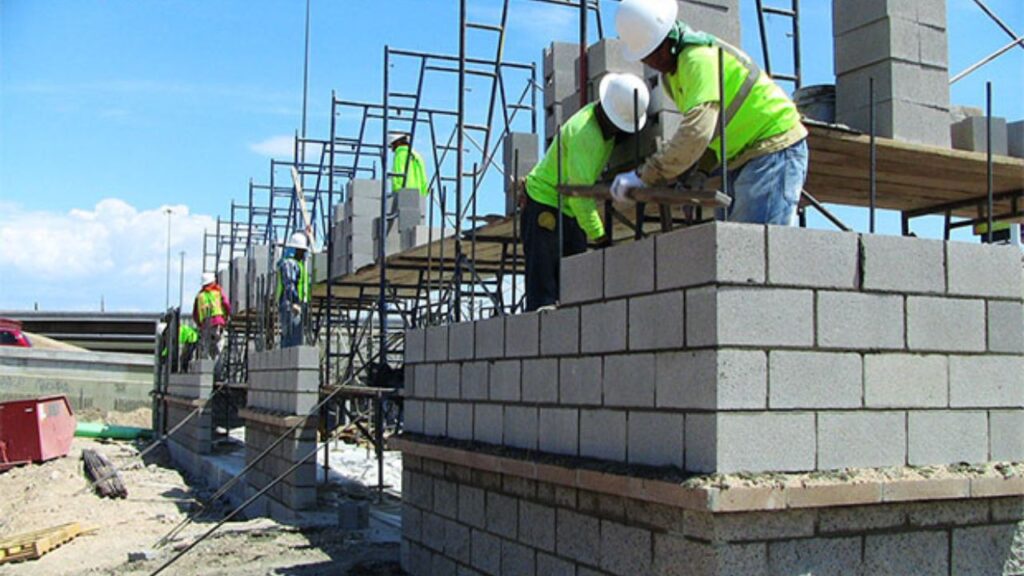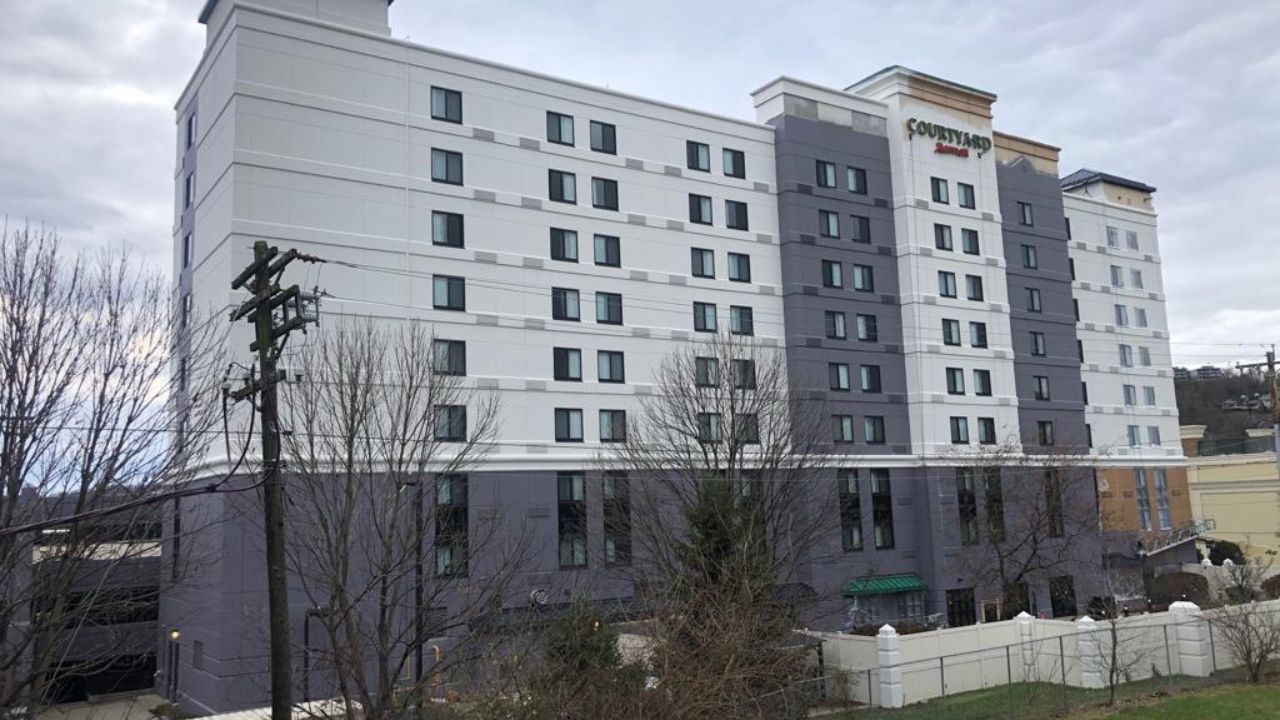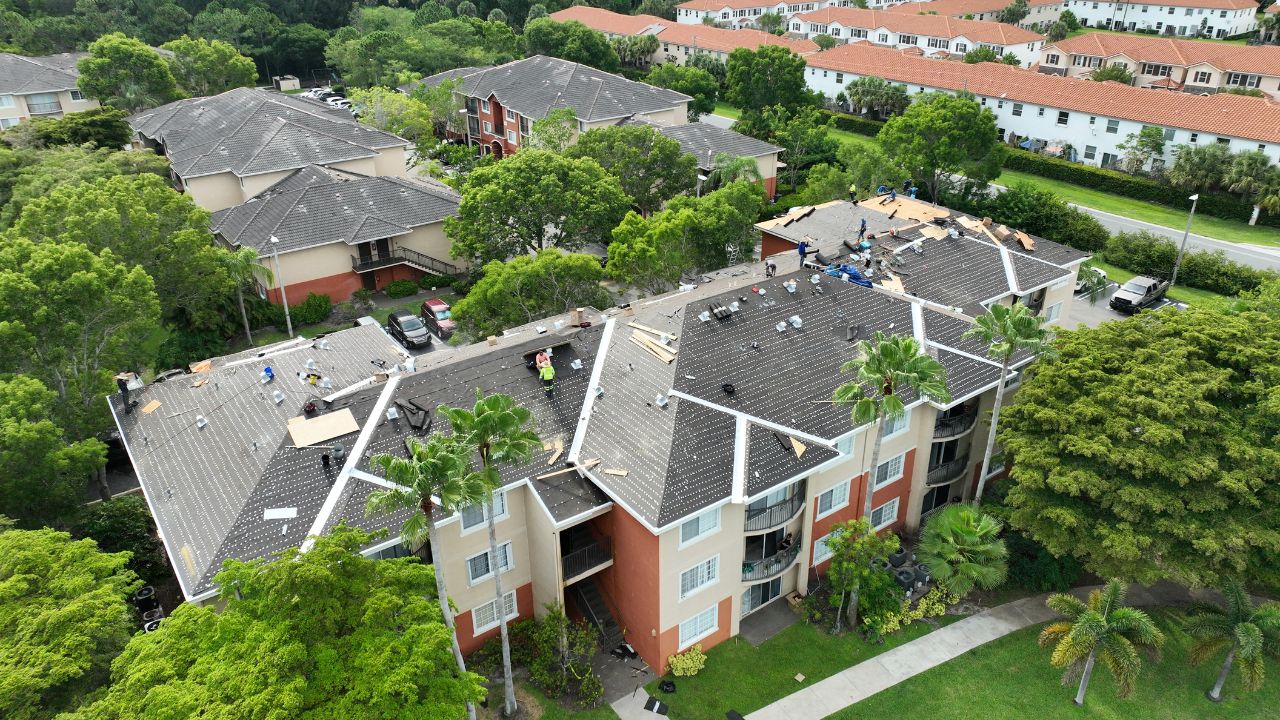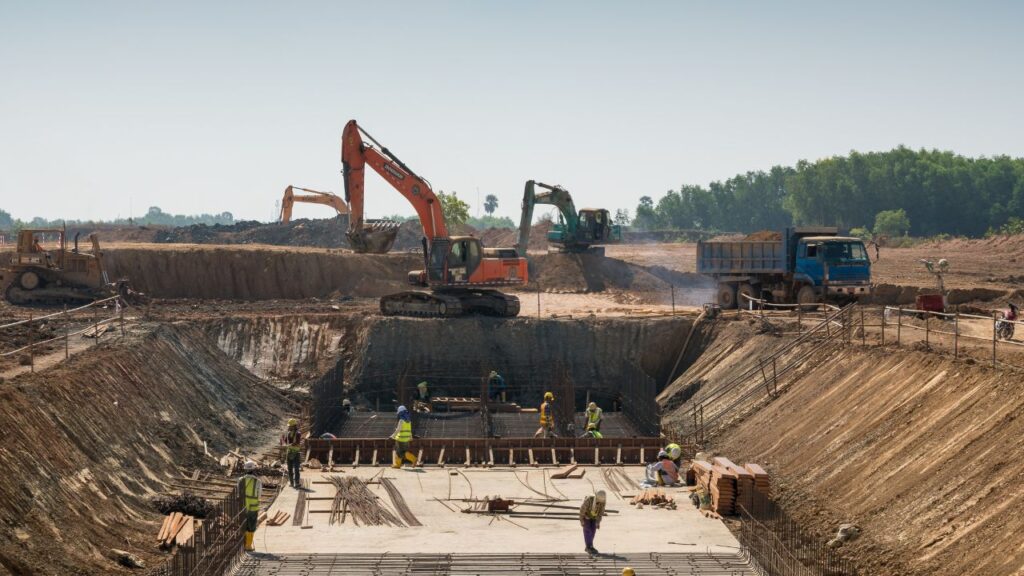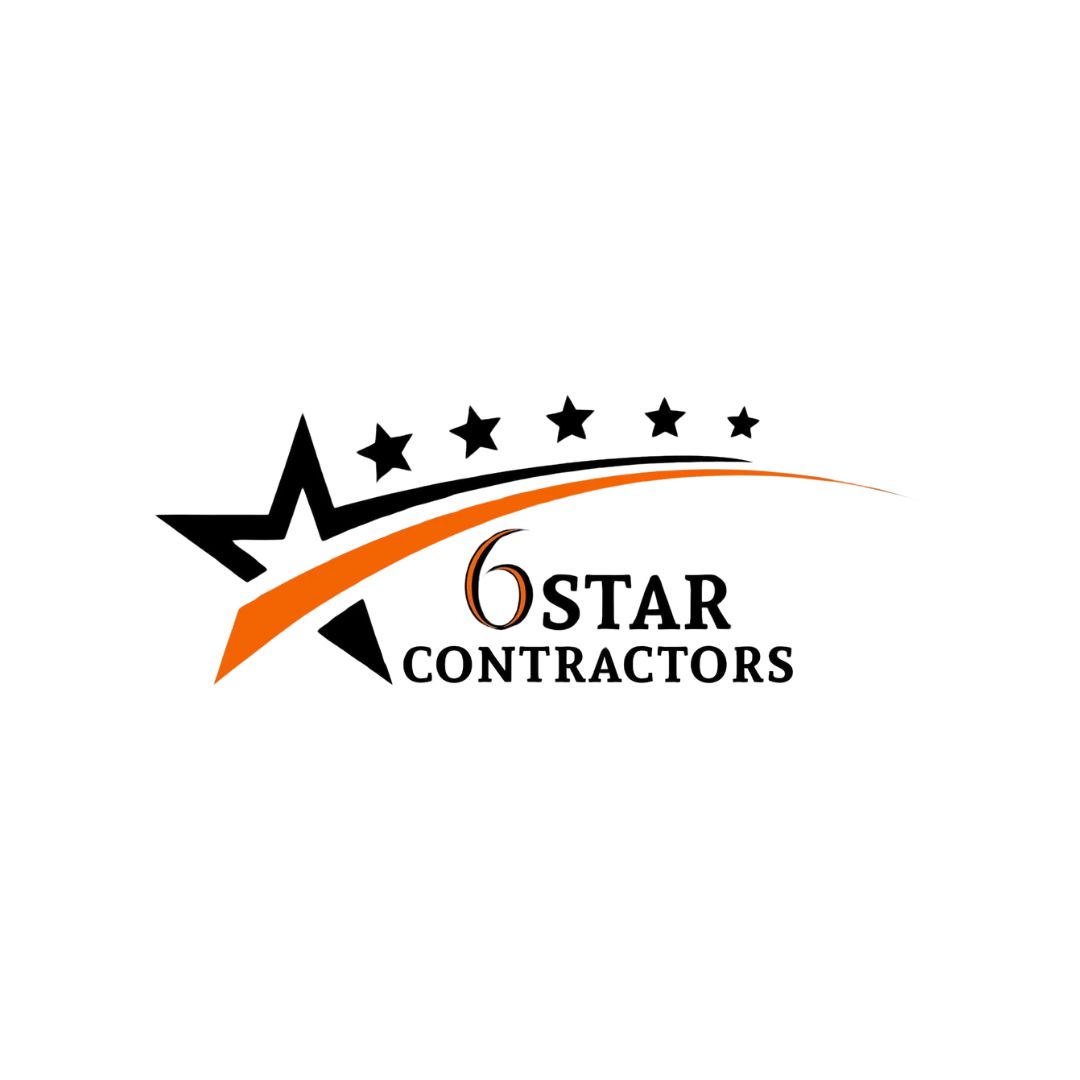- Homepage
- Construction Estimate for Bank Loan
Construction Estimate for Bank Loan
Leading provider of bank loan estimating services.
If you’re applying for a construction loan, your bank will need more than just an idea—they need exact numbers. A well-prepared construction estimate shows lenders that your project is viable, well-planned, and financially sound. Without one, delays or rejections are almost guaranteed. In Florida, where the real estate and construction industries are booming, competition for loans is fierce. Having an accurate and comprehensive construction estimate helps you stand out and proves to lenders that you are serious, knowledgeable, and financially responsible.
At Estimate Florida Consulting, we specialize in helping clients secure funding with detailed, bank-compliant construction estimates that cover everything from labor to materials and timeline projections.

Our experts know how to format and present these estimates to align with lender expectations and local permitting authorities.
What is a Construction Estimate for a Bank Loan?
A construction estimate for a loan is a detailed, line-item breakdown of projected building costs submitted to your financial institution during the loan approval process. It provides the bank with clarity on how much funding you’ll need, how it will be used, and how the project will be managed. This estimate often includes costs associated with permits, zoning, material procurement, contractor labor, and contingency planning.
Banks require these estimates to ensure that borrowers are not underestimating or overestimating costs, which could either result in unfinished construction or inefficient use of funds. The more thorough your estimate, the higher your chance of getting approved quickly and for the right amount. Our team ensures that your estimate meets the highest standards to satisfy both the bank and project appraisers.
Why Banks Require Detailed Cost Estimates?
Lenders want to minimize risk. A professional estimate helps them understand if your budget is realistic, whether your contractor is experienced, if your timeline is feasible, and that you have accounted for local construction regulations. These insights ensure the bank that your project can be completed within the proposed timeframe and budget, reducing the chance of loan defaults.
Detailed estimates act as a risk mitigation tool for financial institutions. They help banks assess the accuracy of your financial planning and the reliability of your construction partners. With interest rates and risk tolerance fluctuating, particularly in Florida markets, a professionally prepared estimate can make or break your financing approval.
Key Components of a Bank-Ready Construction Estimate
A complete bank construction estimate includes:
Scope of work
Itemized material and labor costs
Equipment rentals
Permits and fees
Contingency funds (typically 10%)
Schedule of values or cost phases
Total project cost with markups and taxes
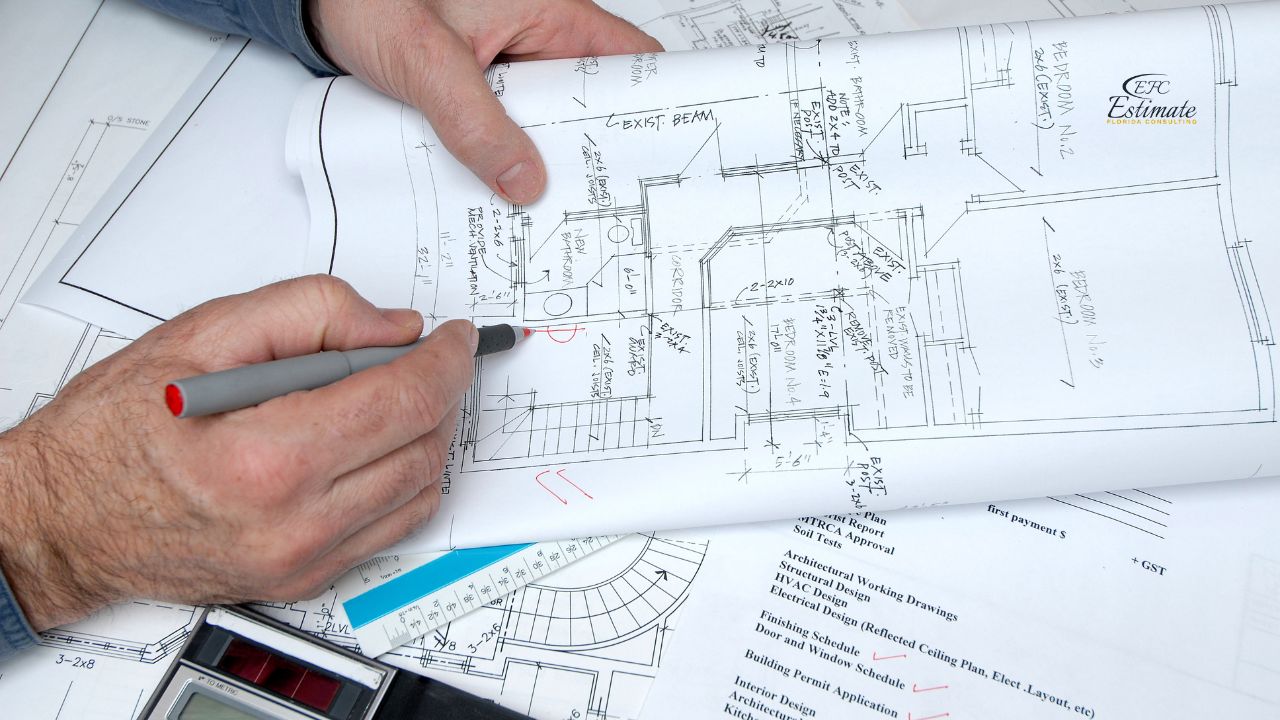
Estimate Florida Consulting ensures all these elements are present, well-structured, and easy for banks to interpret. We also tailor our estimates to reflect Florida’s unique construction costs, including regional labor shortages, weather-related building codes, and zoning regulations. A bank-ready estimate needs to be more than accurate; it must be organized, justified, and defensible.
Typical Construction Cost Categories in Florida
Construction costs in Florida vary by region, but here’s a basic cost category breakdown:
| Category | Estimated Range ($/Sq. Ft.) |
|---|---|
| Site Work & Excavation | $5 – $15 |
| Concrete & Foundation | $15 – $30 |
| Framing & Carpentry | $20 – $45 |
| Electrical Systems | $10 – $25 |
| Plumbing Systems | $8 – $20 |
| HVAC Installation | $12 – $25 |
| Roofing & Insulation | $10 – $22 |
| Interior Finishes | $25 – $60 |
| Exterior & Landscaping | $5 – $20 |
Local climate, building codes, and availability of skilled labor all influence construction costs in Florida. A beachfront project in Miami may have very different needs and pricing than a suburban development in Orlando. Our estimates are tailored to the location, type of building, and project complexity to give banks the most reliable financial picture possible.
We Provide 3D Rendering Services!
For Commercial & Residential and Other Projects
Turnaround time is 1-2 days.
Win More Projects With Us
Estimate Florida Consulting – Professional Support That Works
Estimate Florida Consulting has helped hundreds of homeowners, contractors, and developers across Florida secure funding by delivering bank-compliant construction estimates. Our team understands local permitting laws, regional construction costs, and lender requirements. This makes us uniquely positioned to provide cost data that is both accurate and trusted by financial institutions.
We don’t just offer generic templates—we take your construction plans, blueprints, and budget goals and turn them into actionable documentation that banks respect. From high-rise commercial buildings to custom-built single-family homes, we ensure your financial request is backed by credible, well-organized documentation.
How We Prepare Your Bank-Ready Construction Estimate?
Here’s what our process looks like:
Initial Consultation – Understand project type, size, and timeline
Plan Review – Study architectural drawings, specs, and permits
Takeoffs & Quantities – Use software and manual reviews to generate accurate takeoffs
Cost Estimation – Based on Florida-specific labor rates and material pricing
Formatting for Bank Submission – Clear, professional, and lender-ready documents
Revisions & Support – We’ll revise or update estimates if your lender requests changes
Each step ensures that your estimate not only reflects true project cost but is also aligned with lender expectations and risk management standards. Our turnaround time is fast, and our estimates are comprehensive, allowing you to submit your loan application with confidence.
Residential vs. Commercial Bank Loan Estimates
Residential:
Residential construction estimates are usually based on square footage and include pricing for room types, finishes, and landscaping. These estimates are often more flexible and are reviewed by banks for custom home loans, renovations, or multi-unit developments. A strong residential estimate also considers resale value and HOA restrictions.
Commercial:
Commercial loan estimates are more rigid and are structured by CSI Division format. They include milestone-based payment schedules, code compliance, ADA requirements, and often LEED certification costs. The level of scrutiny is higher, and banks expect extreme precision. We specialize in both, ensuring your project gets the tailored support it needs.

How a Precise Estimate Increases Your Loan Approval Chances?
A vague estimate can kill your deal. But a professional estimate:
Boosts lender confidence
Shows you’re working with experienced consultants
Proves you’ve accounted for real-world costs
Prevents underfunding or overruns
Accurate cost forecasting also reduces the likelihood of financial missteps during construction. Banks want to see a full understanding of the project’s economics, including escalation clauses, payment timelines, and subcontractor involvement. A professionally done estimate is often the difference between fast approval and frustrating delays.
Get 5 New Projects in the Next 7 Days With Our System
Mistakes to Avoid in Your Bank Construction Estimate
Guessing on costs rather than using takeoff software or real market rates
Excluding permits or inspection fees, which can delay your project
Underestimating labor in Florida’s hot markets, especially post-hurricane rebuild areas
Forgetting contingency planning, which most banks require
Poor formatting that lenders can’t process easily
With Estimate Florida Consulting, you avoid these errors because we ensure every component is covered. We understand what banks scrutinize, and we plan accordingly.
Timeline and Process for Getting Your Estimate
Most estimates are completed in 3–5 business days, depending on project size. For rush services, we offer next-day delivery on smaller jobs. The more detailed your construction documents, the faster we can generate a reliable estimate. We provide editable formats for submission and revisions in case your lender requests changes.
You provide: Plans, scope, budget, and timeline.
We deliver: A clean, formatted, bank-ready estimate with justification.

Construction Estimate Sample for Loan Application
Here’s a simplified sample of what we deliver:
| Scope | Quantity | Unit Cost | Total Cost |
| Site Clearing | 1 acre | $5,000 | $5,000 |
| Foundation Work | 1,200 sq. ft. | $28/sq. ft. | $33,600 |
| Framing & Roofing | 1,200 sq. ft. | $45/sq. ft. | $54,000 |
| Electrical Installation | 1,200 sq. ft. | $20/sq. ft. | $24,000 |
| Plumbing & Fixtures | Lump Sum | – | $18,000 |
| HVAC Systems | Lump Sum | – | $22,000 |
| Interior Finishes | 1,200 sq. ft. | $40/sq. ft. | $48,000 |
A full report would also include contingency, general conditions, contractor overhead, and potential escalation allowances.
90% More Chances to Win Bids with Our Estimate
How Much Does a Professional Construction Estimate Cost?
Pricing depends on scope, but our typical pricing starts at:
Residential Projects: $300 – $700
Commercial Projects: $700 – $1,500+
Custom Projects with Revisions: Varies based on complexity
The investment is small compared to the benefit of securing a multi-hundred-thousand-dollar loan. Our clients consistently report faster approvals and stronger credibility with lenders.
Conclusion
Ready to get started? Don’t let a weak estimate delay your loan approval. Contact Estimate Florida Consulting today for a precise, bank-compliant construction estimate that gets your project moving. Our Florida-based team understands your market, your needs, and your lenders.
Question Answer
Frequently Asked Question
A construction estimate for a bank loan is a professionally prepared document outlining the projected costs of building a structure. It includes detailed breakdowns of materials, labor, equipment, permits, and contingencies. Lenders require this to assess the project’s feasibility and determine the loan amount.
Banks use the estimate to ensure the loan amount matches realistic construction costs. A clear and professional estimate reduces approval delays and increases trust between borrower and lender.
We provide:
Detailed, bank-compliant cost estimates
CSI-division formatting
Material takeoffs and labor projections
Contingency analysis
Draw schedules for loan disbursement
Consultation with your contractor or architect
Our goal is to ensure your estimate meets every bank’s standard and fast-tracks your loan approval.
We help:
Homeowners applying for new construction loans
Real estate developers and investors
Builders and general contractors
Architects and engineers needing accurate cost input
Commercial property owners planning expansion or renovation projects
Yes. We prepare estimates in CSI (Construction Specifications Institute) format, which is widely accepted by banks and financial institutions. This structured format gives clarity to each trade, such as foundation, framing, roofing, HVAC, electrical, plumbing, finishes, and more.
Our typical turnaround time is 3–5 business days, depending on project complexity. For urgent cases, we offer expedited (rush) estimating services.
Comprehensive Trade-Specific Estimates
At Estimate Florida Consulting, we offer detailed cost estimates across all major trades, ensuring no part of your project is overlooked. From the foundation to the finishing touches, our trade-specific estimates provide you with a complete and accurate breakdown of costs for any type of construction project.

Testimonials
What Our Clients Say
We take pride in delivering accurate, timely, and reliable estimates that help contractors and builders win more projects. Our clients consistently praise our attention to detail, fast turnaround times, and the positive impact our estimates have on their businesses.
Estimate Florida Consulting has helped us win more bids with their fast and accurate estimates. We trust them for every project!

Steps to Follow
Our Simple Process to Get Your Estimate
01
Upload Plans
Submit your project plans, blueprints, or relevant documents through our online form or via email.
02
Receive Quotation
We’ll review your project details and send you a quote based on your scope and requirements.
03
Confirmation
Confirm the details and finalize any adjustments to ensure the estimate meets your project needs.
04
Get Estimate
Receive your detailed, trade-specific estimate within 1-2 business days, ready for your project execution.





